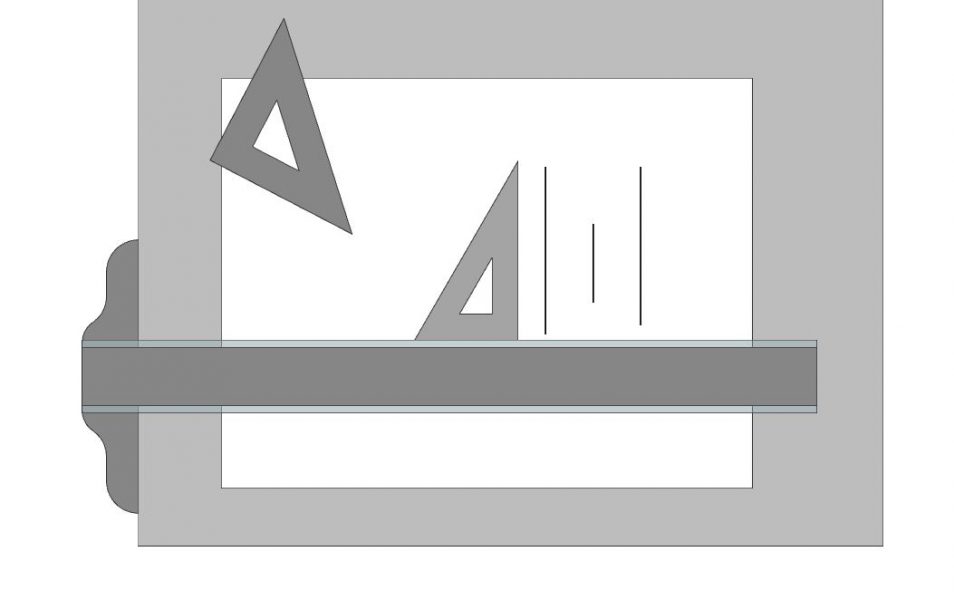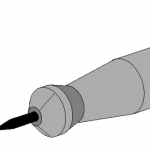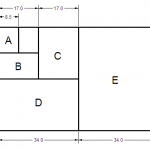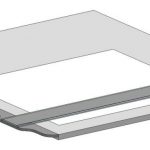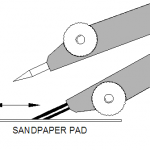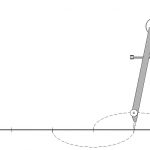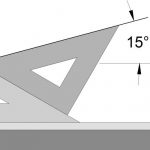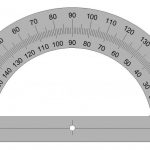
All pencils are not the same. You cannot produce quality engineering drawings with ordinary pencils and lead. Pencil lead is made from graphite and is available in various hardness grades. The hardness of the lead is controlled by changing the clay content in the graphite. Technical lead hardness is specified using the H-B (hardness/blackness)...
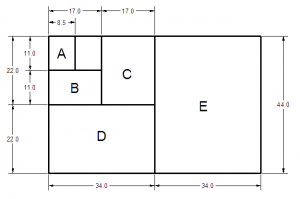
High quality paper used to be essential to producing professional engineering drawings. Today, engineering drawing are usually just printed on bond paper (if they are printed at all). Bond paper is the type of paper you are probably most familiar with. It is commonly used as “printer paper.” Some companies have gone to a “paperless”...
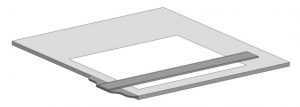
While some drawing can be done on an ordinary desk, a drawing board is really a better choice. A simple piece of hardwood plywood can be used for student work, and the addition of a quality board cover will make the board perform extremely well. A simple piece of plywood with a clean edge and...
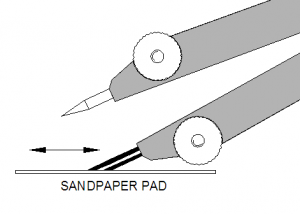
Compasses are used to draw medium to large arcs and circles. Small circles are better drawn with circle templates (discussed later). Mathematically, compasses can be thought of as instruments to lay out a set of points that are a particular distance (a radius) away from a given point. This means that compasses useful for laying out...
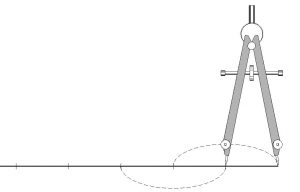
Dividers are used to mark off a series of equal distances. They look similar to compasses except they do not have a drawing point. Instead they are equipped with two sharp needle points. Since compasses are available with extra point, they can be used as dividers. Unless students will be using dividers frequently, there is...

Triangles are essential tools for manual work. Two triangles are required: a 30-60-90° and a 45-45-90°. A small size (4 to 6 inches) is convenient for students. The two triangles can be used with the T-square to produce vertical lines or lines at 30°, 45°, or 60° to horizontal. Triangles used with a T-square to...
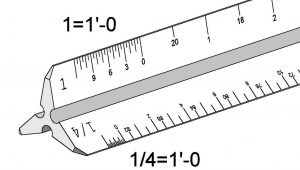
Because engineering drawings are not always drawn full size, ordinary rulers are not usually used for manual drafting. Instead, instruments called scales are employed. Scales are precision instruments with fine graduations or marks. They are designed to let the drafter draw scale drawings without having to convert from full scale to a different scale. If a large part needs to be...

Engineering drawings require precision, accuracy, and attention to detail. Mistakes and errors can be costly and time-consuming, making erasers a crucial tool in the drafting process. However, not all erasers are created equal, and each has its own unique properties that make it suitable for certain applications. In this article, we will discuss the different...
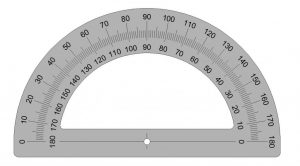
A drafting tool many students already have is a simple plastic protractor. Protractors are instruments that measure angles. Students will need a protractor that can measure at least to the nearest degree. Triangles should be used to lay out lines in 15° increments; otherwise, a protractor can be used. A discussion on angle measurement is...
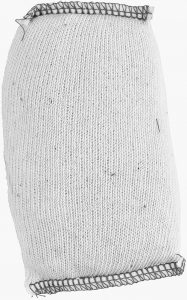
A dry cleaning pad is a mesh bag filled with gum eraser powder. As a drawing is being constructed, smudges from will tend to form on the paper. A dry cleaning bag can be squeezed over the surface of the drawing and dabbed gently to remove the smudges. You may also hear these called a scum bag. Dry...
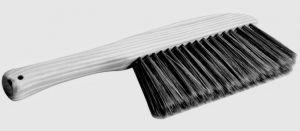
Pencil drawing are especially susceptible to smudging. So when an eraser or dry cleaning pad is used you must never use your hand do wipe the drawing. Instead, a drafting brush is used. Drafting Brush (Exceart, Amazon.com)

It can sometimes be difficult to erase a line that crosses another line. This is one of the many uses for an eraser shield. Eraser shields are made from thin sheet metal and are perforated with various shapes. The eraser shield is laid on top of the line to erase, shielding the neighboring lines that are...

A French curve is designed to create curves that cannot be constructed with a compass. To use a French curve, plot points that are known to lie on the curve and fit the instrument to the points. French curves are useful for making curves whose radius changes. French curves are available in a wide variety of shapes...
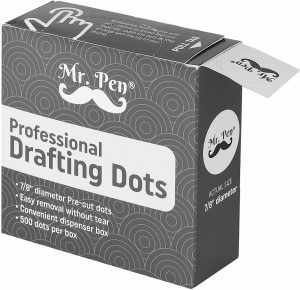
Drafting tape is similar to masking tape, except that it has a more easily removable adhesive backing. Blue painters’ tape can be used in place of drafting tape for student or professional work. It is less expensive and is easier to find. Drafting dots are convenient pre-cut rounds of drafting tape that can be useful to...

Making high quality circles (especially small ones) is difficult with a compass. A circle template allows circles to be constructed with lead holders and mechanical pencils. A circle template is a plastic tool that has been perforated with round holes of various diameters. The holes are oversize by a small amount to accommodate the pencil...
All pencils are not the same. You cannot produce quality engineering drawings with ordinary pencils...
High quality paper used to be essential to producing professional engineering drawings. Today, engineering...
Drawings should be folded in such a way that they can easily be read without having to unfold the entire...
While some drawing can be done on an ordinary desk, a drawing board is really a better choice. ...
Compasses are used to draw medium to large arcs and circles. Small circles are better drawn with...
Dividers are used to mark off a series of equal distances. They look similar to compasses except they...
Triangles are essential tools for manual work. Two triangles are required: a 30-60-90° and a ...
Because engineering drawings are not always drawn full size, ordinary rulers are not usually used for...
Engineering drawings require precision, accuracy, and attention to detail. Mistakes and errors can be...
A drafting tool many students already have is a simple plastic protractor. Protractors are instruments...
